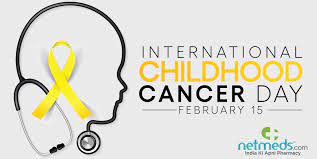International Childhood Cancer Day on February 15 raises awareness about childhood cancer. The day is observed to advocate for improved diagnosis, treatment, and support, challenge misconceptions, and cultural taboos, as well as promote personalized treatment protocols.
International Childhood Cancer Day is observed on February 15 worldwide. Its goals are to increase public awareness of childhood cancer and to push for better early detection, treatment, and support for young patients and their families. With thousands of youngsters receiving a diagnosis each year, childhood cancer continues to be a major global health concern. Children affected by cancer frequently present at a later stage, marked by inadequate awareness, delayed diagnosis, and treatment abandonment, which represent substantial hurdles in properly managing the disease, according to Dr. Satya Prakash Yadav, Director, Bone Marrow Transplant, Medanta, Gurugram.
Furthermore, there is a lot of misinformation and quiet surrounding childhood cancer. Even while many diseases can now be effectively treated because to medical developments, societal taboos and false information still exist, making early detection and successful treatment difficult. It takes a multifaceted strategy to dispel these myths and taboos, one that includes educating the public, creating a supportive environment for cancer-affected children and their families, and increasing awareness. Let’s dispel the misconceptions and taboos around children cancer on International children Cancer Day in 2024.
Myth 1: Cancer in children is uncommon.
Despite what many people think, juvenile cancer is not as uncommon as they think. The most common cause of disease-related mortality in children is childhood cancer. An estimated 200,000 children receive cancer diagnoses worldwide each year. Even while the incidence is less than in adults, it is nevertheless rather high.
Myth 2: Cancer in children is inherited.
Most childhood cancers are not inherited, while some do have a genetic component. Rather, they frequently result from haphazard mutations in the DNA of developing cells. While environmental factors might be involved in certain cases, the precise cause of the majority of children malignancies is yet unknown. Parents and families may feel less unwarranted shame or anxiety after realizing this.
Myth 3: Cancer in children can spread.
Cancer in children is not transmissible. It cannot be spread via close proximity to someone who has cancer, exchanging possessions, or physical touch. Regrettably, for kids receiving treatment, this misperception may result in social stigma and isolation. It takes education and awareness to break this myth and provide affected families with help.
Myth 4: Cancer in children always results in death.
Even though the survival rate for some types of juvenile cancer is lower than others, many of them are quite curable, particularly if caught early. The results for kids with cancer have greatly improved thanks to developments in targeted therapy and customized medicine, among other therapeutic modalities.
Myth 5: Treatment for childhood cancer results in infertility.
Not all childhood cancer therapies result in infertility, while some, like chemotherapy and radiation therapy, can impact fertility in both adults and children. Moreover, older kids and teenagers receiving cancer treatment have access to options for fertility preservation such sperm or egg banking. Families should be informed about these worries by healthcare professionals, who should also, where necessary, look into fertility preservation measures.
Conclusion
February 15 is celebrated as International children Cancer Day, a day to campaign for better diagnosis, treatment, and support for young patients and their families as well as to increase public awareness of children cancer. With thousands of children being diagnosed with childhood cancer every year, childhood cancer is a major worldwide health concern. Cultural taboos and misinformation linger, making early discovery and successful treatment more difficult. Many times, factors that are uncommon, genetic, infectious, always lethal, and that lead to infertility are misinterpreted. These fallacies can be debunked and a supportive environment for affected families can be fostered by elements such as genetics, environmental factors, and treatment methods. The results of treatment for children with cancer have greatly improved because to developments in medical technology and protocols. When it’s appropriate, medical professionals should talk to families about these worries and look into fertility preservation methods.



